Mary Anne Yarde's Blog: The Coffee Pot Book Club , page 156
January 25, 2019
#BookReview — The Briton and the Dane: Concordia (The Briton and the Dane #4) By Mary Anne Bernal #HistoricalFiction #HistoricalRomance @BritonandDane
The Briton and the Dane: Concordia(The Briton and the Dane #4)By Mary Anne Bernal
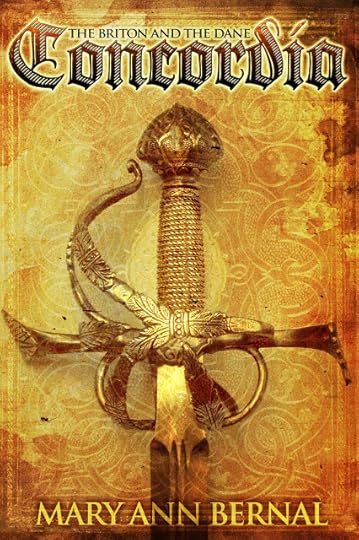
Travel back in time to late Ninth Century Anglo-Saxon Britain where Alfred the Great rules with a benevolent hand while the Danish King rules peacefully within the boundaries of the Danelaw. Trade flourishes, and scholars from throughout the civilized world flock to Britannia’s shores to study at the King’s Court School at Winchester.
Enter Concordia, a beautiful noble woman whose family is favored by the king. Vain, willful, and admired, but ambitious and cunning, Concordia is not willing to accept her fate. She is betrothed to the valiant warrior, Brantson, but sees herself as far too young to lay in the bedchamber of an older suitor. She wants to see the wonders of the world, embracing everything in it; preferably, but dangerously, at the side of Thayer, the exotic Saracen who charms King Alfred’s court and ignites her yearning passions.
Concordia manipulates her besotted husband into taking her to Rome, but her ship is captured by bloodthirsty pirates, and the seafarers protecting her are ruthlessly slain to a man. As she awaits her fate in the Moorish captain’s bed, by sheer chance, she discovers that salvation is at hand in the gilded court of a Saracen nobleman.
While awaiting rescue, Concordia finds herself at the center of intrigue, plots, blackmail, betrayal and the vain desires of two egotistical brothers, each willing to die for her favor. Using only feminine cunning, Concordia must defend her honor while plotting her escape as she awaits deliverance, somewhere inside steamy, unconquered Muslim Hispania.

Someone should have told Concordia that when wishes come true they can leave a very bitter taste.
It had been very easy to fall in love with the young and handsome man from Hispania, but alas, their romance was never meant to be. It was nothing but an inexperienced girl’s foolish dream.
Several years have passed, and Concordia has not seen or heard anything more of Thayer, but not for one moment has she stopped loving him. Since that night, Concordia has worn the necklace Thayer gave her. He was still the first thing she thought about in the morning and the last thing at night. She wished ardently to speak with him, to see him, just one more time.
Concordia marries a man whom she regards as a very dear friend. She should be content. Nevertheless, her heart still belongs to Thayer. Desperate to please his young wife, Brantson takes her on a voyage — their destination, Rome. However, they never make it, for their boat is boarded by Saracen pirates. What was to be an adventure of a lifetime, soon turns into a harrowing nightmare.
If Concordia is to survive, then she must use her wits and her body, but there is no telling if even that will be enough. If only Thayer were here to save her. He would assure her safety and if nothing else, return her to her homeland.
From the comfort of King Alfred’s Great Hall to the terror of captivity in a foreign land, The Briton and the Dane: Concordia (The Briton and the Dane #4) by Mary Anne Bernal is the unforgettable story of one woman’s quest to find true love and in doing so find herself as well.
Set firmly in the 9th Century, The Briton and the Dane: Concordia, drew me in from the opening sentence and held me enchanted until the very end. Bernal’s narrative was not only utterly irresistible but incredibly vivid in the telling. This is a story that threatened to mesmerise. It was so compelling that I read it in one sitting. There was no way I could put this book down once I had started.
Concordia is an unlikely heroine. She is spoilt and conceited. However, there is an endearing innocence about her, and for anyone whose first love was unrequited, there is a recognition of her daydreams and her heartache. She pines terribly for Thayer. As a character, Concordia certainly does her fair share of growing up as the novel progresses. Her relationship with Chad, the Saracen pirate, gave this story an unexpected twist. Of all the men in Concordia’s life, Chad, although not the most honest, is more than a match for our fiery young heroine’s free spirit.
The antagonist of this tale is an unlikely one. Thayer speaks with a double-tongue. He is not what he seems and Concordia learns a harsh but terrible lesson which is to not take anyone at face-value. Her love for him is pure, but his love for her is about control and dominance. He is the serpent who promises much but delivers nothing but heartache.
Bernal paints a dazzling portrait of what life was like in 9th Century Hispania. There is an elegant sweep of historical brilliance, giving this book an almost sensual grounding of time and place. Bernal has certainly woven the history into this incredibly enthralling tale. I was particularly interested in Bernal’s depiction of the Emirate of Cordova (Emirate of Córdoba). This was a time of power struggles and dynasties, but it was also the beginning of a political decline of the emirate. I think Bernal has captured the essence of this era very well through her fictional portrayal. The tension between the Muslim community and the Christian one is evident throughout this story, and indeed history tells us that there was much unrest, particularly at the Christian border.
Although this is book #4 in the series, Concordia stands very firmly on her own two feet. So, if you are looking for your next fix of historical fiction, then why not check out The Briton and the Dane: Concordia (The Briton and the Dane #4) by Mary Anne Bernal.
I Highly Recommend.
Mary Anne Yarde.The Coffee Pot Book Club.
Amazon UK • Amazon US
Mary Ann Bernal
 Mary Ann Bernal attended Mercy College, Dobbs Ferry, NY, where she received a degree in Business Administration. Her literary aspirations were ultimately realized when the first book of The Briton and the Dane novels was published in 2009. In addition to writing historical fiction, Mary Ann has also authored a collection of contemporary short stories in the Scribbler Tales series. Her latest endeavor is a science fiction/fantasy novel entitled Planetary Wars Rise of an Empire. Originally hailing from New York, Mary Ann now resides in Elkhorn, Nebraska.
Mary Ann Bernal attended Mercy College, Dobbs Ferry, NY, where she received a degree in Business Administration. Her literary aspirations were ultimately realized when the first book of The Briton and the Dane novels was published in 2009. In addition to writing historical fiction, Mary Ann has also authored a collection of contemporary short stories in the Scribbler Tales series. Her latest endeavor is a science fiction/fantasy novel entitled Planetary Wars Rise of an Empire. Originally hailing from New York, Mary Ann now resides in Elkhorn, Nebraska.Connect with Mary Ann: Website • Whispering Legends Press • Twitter.
Published on January 25, 2019 23:30
#BookReview — The Cold Light of Dawn (The King’s Greatest Enemy #4) By Anne Belfrage #Medieval #HistoricalFiction @abelfrageauthor

The Cold Light of Dawn(The King’s Greatest Enemy #4)By Anne Belfrage
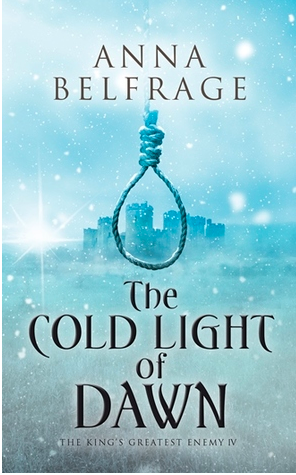
After Henry of Lancaster’s rebellion has been crushed early in 1329, a restless peace settles over England. However, the young Edward III is no longer content with being his regents’ puppet, no matter that neither Queen Isabella nor Roger Mortimer show any inclination to give up their power. Caught in between is Adam de Guirande, torn between his loyalty to the young king and that to his former lord, Roger Mortimer.
Edward III is growing up fast. No longer a boy to be manipulated, he resents the power of his mother, Queen Isabella, and Mortimer. His regents show little inclination of handing over their power to him, the rightful king, and Edward suspects they never will unless he forces their hand.
Adam de Guirande is first and foremost Edward’s man, and he too is of the opinion that the young king is capable of ruling on his own. But for Adam siding with his king causes heartache, as he still loves Roger Mortimer, the man who shaped him into who he is.
Inevitably, Edward and his regents march towards a final confrontation. And there is nothing Adam can do but pray and hope that somehow things will work out. Unfortunately, prayers don’t always help.

“My, my, how high the gutter-rat has clambered. You owe everything you are to me de Guirande. Best not forget it…”
Adam does not need any reminders of how much the Earl Of March has done for him. Mortimer saved Adam from an abusive father and gave him not only a purpose but a life beyond his wildest of dreams. However, Adam’s loyalties are no longer with his liege lord but with the young King Edward. Why is that so difficult for Mortimer to understand? Adam cannot serve two masters.
As Regent, the Earl of Marsh has power beyond his imagination. He is king in all but name. However, the King will not stay a child forever, and Edward is beginning to resent the Regent’s and his mother’s rule. So why does Mortimer continue to provoke Edward? For everyone knows that when the lion roars the hawk will fall — and it is a very long way to fall. It is said that *those who cannot remember the past are condemned to repeat it. But, Mortimer saw what happened to Despenser. He knows how this could end and yet… Adam can do nothing but watch as this fated tragedy plays out in front of him.
From the extravagance of a coronation to the horrors of the executioner’s rope, The Cold Light of Dawn (The King’s Greatest Enemy #4) by Anna Belfrage is an extraordinary work of historical fiction.
Belfrage draws the reader into the fourteenth century, letting them feel the emotions of the protagonists as well as helping us to understand on an intimate level what life was like for those who were closest to the throne at the beginning of Edward III reign.
Belfrage is incredibly adept at creating characters that her readers care about while skilfully merging their lives with the history of their time. The portrayal of Roger Mortimer, the Earl of Marsh has to be commended. Here is a character that is incredibly flawed but at the same time so exceedingly wonderful. In his quest for glory and riches, he loses something of himself along the way. His dreams are always just out of reach, but still he strives to reach them, and like Icarus, he does fly too close to that sun, and when he falls back to earth nothing will ever be the same. Kudos, Ms Belfrage for bringing to life a character whom I had only ever read about in history books. You gave him back his life and made him breathe. What more could a reader ask for?
Likewise, the portrait of a divided nation, inflamed by jealousy, greed and hatred is remarkably vivid in the telling. Mortimer’s quest for power and then his fear of losing that power, makes this book a riveting read. However, this story is not told from Mortimer’s point of view — the narrative is still that of Adam’s and Kit’s.
With so many historical characters in this book, it was sometimes hard to remember that Adam and Kit are fictional. Adam is a cripple in a court where abled men are celebrated. His struggle to accept his limitation is profoundly moving. Adam wants to be as he always was — strong, healthy, and the best knight in Edward’s stable. The reaction of men whom he thought were friends rings remarkably true. He disability means he is no longer one of them. He is a man to be pitied or ridiculed. His journey towards accepting what he can do and not lamenting about what he cannot was not only emotional but also uplifting. As Adam finds out, there is life away from Edward’s court, and he does not need a sword in his hand and an opponent defeated at his feet to find happiness and peace of mind.
Kit continued to grow as a character. I liked her from the first introduction in book #1 and that like has not diminished. She is a remarkable woman, much like her husband, Adam. Kit is the outsider who finds herself in the circle of the Royal household. The contrast between how she lives and treats people compared to how the Dowager Queen and the Queen treats their subjects is as vast as a chasm. To them, she is a servant, someone who can keep their secrets but is, at the same time, expendable. Kit's goodness and grace does her credit. She is a caring woman, who is a wonderful protagonist and I enjoyed reading about her.
The Cold Light of Dawn is simply impossible to put down. It is one of those books where you don’t want to get to the end because if you are familiar with the history of this time, you know where the story is going and I for one did not want to go there. It was like listening to a clock ticking down the hours, and there was nothing I could do to stop it. All I could do was watch as the drama played out in front of me. One more page became one more chapter, and then one more!
The King’s Greatest Enemy series has been utterly compelling from start to finish. I cannot find the words to praise it enough. It is utterly enchanting. Historical Fiction at its very best.
I Highly Recommend.
Review by Mary Anne Yarde.The Coffee Pot Book Club
* Santayana, George, The Life of Reason: the Phases of Human Progress (1905).
Amazon UK • Amazon US Anna Belfrage
 Had Anna been allowed to choose, she’d have become a time-traveller. As this was impossible, she became a financial professional with two absorbing interests: history and writing. Anna has authored the acclaimed time travelling series The Graham Saga, set in 17th century Scotland and Maryland, as well as the equally acclaimed medieval series The King’s Greatest Enemy which is set in 14th century England. She has recently released the first in a new series, The Wanderer. This time, she steps out of her normal historical context and A Torch in His Heart is with a fast-paced contemporary romantic suspense with paranormal and time-slip ingredients.
Had Anna been allowed to choose, she’d have become a time-traveller. As this was impossible, she became a financial professional with two absorbing interests: history and writing. Anna has authored the acclaimed time travelling series The Graham Saga, set in 17th century Scotland and Maryland, as well as the equally acclaimed medieval series The King’s Greatest Enemy which is set in 14th century England. She has recently released the first in a new series, The Wanderer. This time, she steps out of her normal historical context and A Torch in His Heart is with a fast-paced contemporary romantic suspense with paranormal and time-slip ingredients.Find out more about Anna by visiting her website, or herAmazon page.
Published on January 25, 2019 23:00
January 24, 2019
Voices from the Past:The Stories of my Ancestors, by Elizabeth St.John #amwriting #HistoricalFiction #Stuarts @ElizStJohn
Voices from the Past
The Stories of my Ancestors
By Elizabeth St.John
Writing about my own ancestors has been a remarkable journey. Holding their documents, sitting with their portraits, and reading their words of hope, dreams and sorrows is an emotional process. And, knowing what lies ahead as they share their thoughts can be very harrowing. But, as a writer, realizing that these people lived and loved much the same way as we do today can also give me great joy as I tell their stories. It is an honor to bring them alive for today’s readers and remind us that we all have the same dreams and desires, even with centuries between us.The Lydiard Chronicles, my historical fiction series, is named after Lydiard Park, the St.John ancestral home in Wiltshire. Full of portraits and memorials of my family, Lydiard House and adjacent Church of St. Mary's is a writer’s dream. Elizabethan monuments, Jacobean portraits and medieval wall paintings all provide a rich tapestry of images, calling across the ages for their stories to be told.
The characters in The Lydiard Chronicles are all real people, and their stories are drawn from a memoir from the 1660s. By fate—or maybe design—I came upon Memoirs of the Life of John Hutchinson many years ago in Nottingham Castle. Written by Lucy St.John’s daughter, Lucy Hutchinson, her vivid story of her mother brought my ancestors to life, and I was determined to honor the truth of her account of my seventeenth century family. As I researched more, I made the decision to only use contemporary sources to inform my fiction, and so as I read letters, court pleadings, dispatches, their voices started to come alive. And, as I immersed myself more in their world, they became part of my life. Because they were real people, and connected to me, I felt I had an obligation to interpret their lives authentically, while at the same time describing human behaviors that transcend time and place.
 The Six St.John Sisters (Lucy St.John far left) The first in the series, The Lady of the Tower, takes place in the early 1600s. The Tower of London is infamous for the famous prisoners it housed, the horrific torture that took place within its walls, and the tragic executions witnessed on Tower Green. But along with the kept must be the keepers, and the story of my ancestress, Lucy St.John, is that of The Lady of the Tower – the wife of the Lieutenant of the Tower.
The Six St.John Sisters (Lucy St.John far left) The first in the series, The Lady of the Tower, takes place in the early 1600s. The Tower of London is infamous for the famous prisoners it housed, the horrific torture that took place within its walls, and the tragic executions witnessed on Tower Green. But along with the kept must be the keepers, and the story of my ancestress, Lucy St.John, is that of The Lady of the Tower – the wife of the Lieutenant of the Tower.Lucy first moved to the Tower in 1617, with a two year old baby boy and no warning that her life was about to change so drastically. She married Sir Allen Apsley after a heartbreaking betrayal by one of King James’ courtiers. Lucy hoped for a quiet life, marrying an older man and bringing up his two children. All that changed when her sister Barbara married Edward Villiers, brother to the Duke of Buckingham. The Duke, George Villiers, was the favorite of King James and his son, Prince Charles, and with that came the power to bestow all kinds of riches on his friends and relatives. As a result, Lucy’s husband was granted the position of Lieutenant of the Tower.
 Lucy St.John’s house within The Tower of London
Lucy St.John’s house within The Tower of LondonOnce within the Tower, Lucy became a witness to history. She took care of Sir Walter Raleigh in his later years, encouraging his alchemy experiments by lending him her henhouse as a workshop. And, in an ironic twist of fate, Lucy became the guard of Frances Howard, Suffolk’s sister, when she was imprisoned in the Tower after instigating the murder of Thomas Overbury.Along with the duties of organizing food for the prisoners, Lucy was also responsible for their physical wellbeing, as best she could. According to her daughter’s diary: “to all prisoners that come into the Tower she was as a mother. All the time she dwelt in the Tower, if any were sick she made them broths and restoratives with her own hands, visited and took care of them, and provide them all necessaries; if any were afflicted she comforted them, so that they felt not the inconvenience of a prison who were in that place.”
I was also able to include many medicinal recipes within the novel that come from Lady Johanna St.John's Recipe Book, part of the Wellcome Foundation collection in London. Lady Johanna was Lucy's niece, and since so many recipes were handed down and exchanged within the family, I felt it no stretch of the imagination to think some may have been Lucy's.
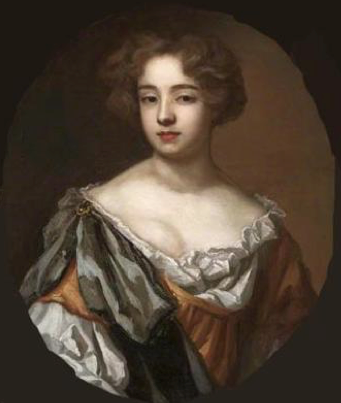 Lady Johanna St.John
Lady Johanna St.John  Lady Johanna’s Recipe book Once I had completed The Lady of the Tower, I realized that the story of Lucy and her family could not end. I set about writing the story of her children, Allen and Luce. Again, back to the Memoirs, Lucy Hutchinson’s extraordinary first-hand account of the English Civil War. The second book of The Lydiard Chronicles is named “By Love Divided” and follows the family into war. Lucy St.John embraced the Puritan cause and yet her son chose to fight for King Charles. Writing about conflict and war from the perspective of those whose lives are gradually torn apart was harrowing, for I could see what lay ahead for them. It was important to me that although as a fiction writer I could foreshadow conflict and sorrow, I should also convey the day-to-day emotions of love, life and joy that permeated their lives. Luce’s accounts of dancing, music and happiness, falling in love and bearing healthy children were as important to me as the battle of Edgehill and the tragedy of a hero’s death. Based on these contemporary diaries, letters and documents, By Love Divided tells of the heart-wrenching choices my family faced, and how they remained loyal to each other through the conflict of civil war. The St.John family motto is Data Fata Secutus, which translates approximately to “Following his allotted fate”. When I’m researching, writing or simply going through my days and a thought enters my head, I feel it might have been my destiny to share these voices of the past.
Lady Johanna’s Recipe book Once I had completed The Lady of the Tower, I realized that the story of Lucy and her family could not end. I set about writing the story of her children, Allen and Luce. Again, back to the Memoirs, Lucy Hutchinson’s extraordinary first-hand account of the English Civil War. The second book of The Lydiard Chronicles is named “By Love Divided” and follows the family into war. Lucy St.John embraced the Puritan cause and yet her son chose to fight for King Charles. Writing about conflict and war from the perspective of those whose lives are gradually torn apart was harrowing, for I could see what lay ahead for them. It was important to me that although as a fiction writer I could foreshadow conflict and sorrow, I should also convey the day-to-day emotions of love, life and joy that permeated their lives. Luce’s accounts of dancing, music and happiness, falling in love and bearing healthy children were as important to me as the battle of Edgehill and the tragedy of a hero’s death. Based on these contemporary diaries, letters and documents, By Love Divided tells of the heart-wrenching choices my family faced, and how they remained loyal to each other through the conflict of civil war. The St.John family motto is Data Fata Secutus, which translates approximately to “Following his allotted fate”. When I’m researching, writing or simply going through my days and a thought enters my head, I feel it might have been my destiny to share these voices of the past.
The Lydiard Chronicles are on sale on Amazon.com as Kindle, Kindle Unlimited and paperbacks. The Lady of the Tower is also on sale at the Tower of London and both paperbacks are available through bookshops.

The Lady of the TowerAmazon
By Love Divided Amazon
Elizabeth St.John
 Elizabeth St.John was brought up in England and lives in California. To inform her writing, she has tracked down family papers and residences from Nottingham Castle, Lydiard Park, and Castle Fonmon to the Tower of London. Although the family sold a few castles and country homes along the way (it's hard to keep a good castle going these days), Elizabeth's family still occupy them - in the form of portraits, memoirs, and gardens that carry their imprint. And the occasional ghost. But that's a different story... Connect with Elizabeth: Website • Facebook • Twitter.
Elizabeth St.John was brought up in England and lives in California. To inform her writing, she has tracked down family papers and residences from Nottingham Castle, Lydiard Park, and Castle Fonmon to the Tower of London. Although the family sold a few castles and country homes along the way (it's hard to keep a good castle going these days), Elizabeth's family still occupy them - in the form of portraits, memoirs, and gardens that carry their imprint. And the occasional ghost. But that's a different story... Connect with Elizabeth: Website • Facebook • Twitter.
Published on January 24, 2019 23:00
January 23, 2019
Book Review — Viking Warlord: A Saga of Thorkell the Great, by David K. Mullaly #Vikings #HistoricalFiction
 Viking Warlord: A Saga of Thorkell the GreatBy David K. Mullaly
Viking Warlord: A Saga of Thorkell the GreatBy David K. Mullaly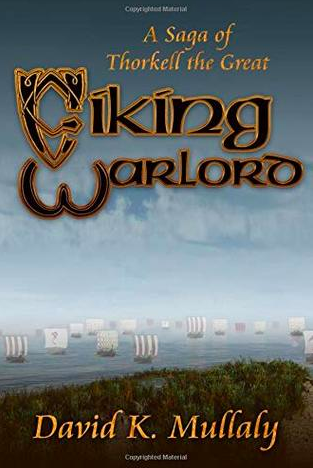
Viking History Comes Alive…
Thorkell inn ha′vi is a rarity during the late Viking Period. He is an old Dane who has survived many raids and two invasions, and he has lived to tell about battlefield triumphs, family dishonor, the defiance of a king, personal banishment, and being named regent of a country--twice. His only remaining desire is for his name and deeds to live on in the sagas of the Norse people, so he will share his story with his family and a famous story-teller. Then he wants to die with a sword in his hand.
This is an historical novel that reflects everything that we actually know about the man, an extraordinary individual who ultimately has to deal with aging and his own mortality. He’s always been able to plan and anticipate the future, but he may come to understand that accepting the unexpected is the biggest challenge.
Although fantasy can provide a guilty pleasure, there are no dragons or trolls or magic in this story, no super-heroes. There are real Vikings, and a clear vision of what life was like for ambitious men and women in the Norse culture.

“Unfolding in front of me is a familiar scene: a battlefield teaming with furious and desperate men…”
The dead haunt Thorkell inn ha′vi’s dreams. He sees his enemies, his friends, and his family. However, in the cold light of day, they are lost to him, for they have travelled on, either to the Christian Paradise or Oden’s great hall in Valhalla. The battles they faced, the loves they lost will be forgotten as time marches forever forward, never once looking back.
Cnut once demonstrated that no man could stop the tide. The same can be said for the seasons. Faced with his mortality, Thorkell fears, more than anything, that his story will be forgotten and that, he will not allow. So Thorkell sends for the gifted story-teller from Isaland, Eyolf Dadaskald. Thorkell gathers his family in his great hall and begins his tale at the beginning — for everyone knows that is where all good stories should start.
Viking Warlord: A Saga of Thorkell the Great, by David K. Mullaly is the masterful retelling of the life of Thorkell inn ha′vi.
What a compelling story this is. It had me gripped from the opening sentence and kept me enthralled until the very last word. I have read many books set in and around the time of King Cnut, but occasionally I stumble upon a book that takes my breath away. Viking Warlord: A Saga of Thorkell the Great, is such a book. Words cannot express how great this book was although I shall do my best to try! Never have I felt such a strong connection to a historical character portrayed in fiction, especially one that I knew little about. The portrayal of Thorkell inn ha′vi is inspired. Here is a man who is not only a great warrior, but one filled with principles and an intelligent wit that looked outside of the box for victory. Mullaly has portrayed Thorkell as a compassionate man, who tries to avoid unnecessary death whenever possible — if he can get the English to pay him and his men to leave them alone then so much the better. Thorkell is not a mindless barbarian. He is honourable when others around him lose their heads. He pillages, but he has principles. I really cannot praise Mullaly enough for this monumental work of scholarship. His eye for human fragility and detail has to be commended. There is no doubt that this book is an enthralling epic and the protagonists are larger than life.
I thought Mullaly’s portrayal of Cnut was fabulous. We meet Cnut in this story when he is just a boy. He is young and impressionable, but there is a quiet strength about him that seems to flourish under Thorkell’s care. Cnut, the man, is a different story altogether as he learns the skills needed to appease a people who have been threatened to comply with his demands but secretly oppose him. His treatment of Thorkell seemed to depend on the mood of the country. No one was safe, not even the most trusted of advisors, if Cnut could see a political gain by replacing them by men more favoured by his subjects. For anyone interested in the early years of Cnut’s life then this book is a must-read.
I adored the portrayal of Eyolf Dadaskald — the famous story-teller. Thorkell is relying on him to keep his story alive, but Eyolf is, like Thorkell, an old man. I found Eyolf rather endearing, especially when he kept falling asleep while Thorkell is recounting the story of his life! Old age catches up with even the best of them.
Mullaly approaches the history of this time with scrupulous care, and it is backed up by confident research. There is a realism throughout this story which is almost tangible. The death of Archbishop Aelfheah was particularly chilling, as was Thorkell’s refusal to fight under the man who killed his father, which made for a compelling subplot. Mullaly is one of those authors who has an intuitive understanding of what makes history worth reading. Likewise, the narrative has a fast-pace and it is incredibly persuasive. This book has an energy about it that threatens to mesmerise.
There is much in this book to recommend, and if you are a fan of Michael Hirst’s Vikings series, then Viking Warlord: A Saga of Thorkell the Great is one you should definitely have on your to-read list. This is story-telling at its very best. I wish I had written it.
I Highly Recommend.
Mary Anne Yarde.The Coffee Pot Book Club.
Amazon UK • Amazon US
David K. Mullaly
 After teaching English and creative writing for a few decades at both the high school and the college levels, I imagined writing something substantial, but I had no clue for a subject. My involvement in buying and selling Viking artifacts, and doing the historical and archaeological research needed to be knowledgeable about them, certainly expanded my horizons. However, it wasn't until I stumbled on the figure of Eadric of Mercia that I found a subject I believed I could present in a genuinely different and hopefully interesting way.
After teaching English and creative writing for a few decades at both the high school and the college levels, I imagined writing something substantial, but I had no clue for a subject. My involvement in buying and selling Viking artifacts, and doing the historical and archaeological research needed to be knowledgeable about them, certainly expanded my horizons. However, it wasn't until I stumbled on the figure of Eadric of Mercia that I found a subject I believed I could present in a genuinely different and hopefully interesting way. As a side note, while I was learning about the Vikings, I came to the conclusion that I likely have some Norse blood in me. I'm Irish on both sides of my family, going way back, but I have blond hair, blue eyes, a red beard, and skin that just doesn't like the sun--which doesn't sound at all like Celtic physiology. In fact, the Vikings, primarily from Norway, invaded and in some cases settled in Ireland, especially along the east coast.
So, I tell myself that I am part Viking, but I have absolutely no interest in getting a DNA test to confirm or refute my theory. I like the idea of having some Viking ancestry, and I'll leave it at that. Science has its place, but so does a good story.
Connect with David: Goodreads• Amazon Author Page
Published on January 23, 2019 23:30
Indentured in Barbados: The Fate of Scottish Prisoners of War, by Cryssa Bazos #History #Scotland #Cromwell @CryssaBazos
Indentured in Barbados: The Fate of Scottish Prisoners of War by Cryssa Bazos
The English Commonwealth of 1651 had a challenge on their hands. During the third English Civil War, their commander Oliver Cromwell defeated the forces of Charles Stuart (the future King Charles II) first at Dunbar, and then precisely a year later, at Worcester. But Parliament was left with a pressing concern: What to do with the thousands of Scottish prisoners that they had captured?
Catch and release, even with exacting a promise not to raise arms against them again, wasn’t a viable option, and Parliament didn’t have the resources to keep thousands of Scottish prisoners indefinitely. After the Battle of Worcester, the cost to feed a prisoner was recorded as 2 1/4 pence a day, and this did not include the cost of coal to keep the cells heated. With an estimated ten thousand prisoners captured, the potential cost to a cash-strapped Parliament amounted to over twenty-five hundred pounds a month.
Parliament’s solution was to ship these Scottish prisoners to the English colonies as indentured servants. The plantations in Virginia, Massachusetts, and Barbados desperately needed labour and this proved to be a coldly efficient solution.
Those who found themselves in the New England colonies were better off than those who were shipped to Barbados. Though there were hardships to overcome in the New England colonies, transportation to Barbados was akin to a death sentence due to its harsh climate and demanding working conditions. Being “Barbado’ed” was one of the worst punishments Parliament could have devised.

Colonial Barbados was an inhospitable land, quite opposite to the modern vacation destination tourists flock to today. In the mid 17th century, the island was heavily wooded while roads were rough and broken by tree stumps. Sugar cane was the major crop and provided unparalleled wealth to the planation owners, but the crop was labour intensive. The planters were heavily reliant on African slaves and indentured servants for sugar production.
Indentured servants had found their way to Barbados since the colony was founded in 1627, some, but not all, willing. For many it was a way to seek opportunities, for others, a way to escape poverty or debtor’s prison. As the need for indentured servants exponentially increased with the onset of the sugar trade, ruthless merchants would kidnap even women and children to make their quotas. For the plantation owners in Barbados, this sudden influx of Scottish prisoners would have been a welcome development.
Indentures were usually for terms of five to seven years, although they could be extended as a form of punishment for bad behaviour. At the end of the indenture, the servant would receive a small plot of land, or in later years when land became too valuable, a pre-determined amount of sugar or passage home.

For the Scottish prisoners arriving after Worcester, it’s unclear what their terms of bondage would have been. One of those prisoners was a German nobleman who had turned mercenary and fought for the king. Heinrich Von Uchteritz was shipped out to Barbados along with thirteen hundred other prisoners in the beginning of 1652. From his own account, he seems to have considered himself as little better than a slave and referenced his bondage as being for life: “I, like the other prisoners and those sold there, would have had to spend my life in difficult bondage and would have had to die.” Fortunately for Heinrich, he was ransomed by his countrymen and released from bondage four months after his arrival in Barbados. Others weren’t so fortunate.
It would have been a strange sight for the Scottish prisoners when they finally Barbados and anchored in Bridgetown harbour. The passage would have taken approximately eight weeks and many easily died before reaching Barbados. Bridgetown was built on swampy ground and the air carried an unhealthy odour. In the 1640’s, plantation owners would have come aboard the ships to inspect and purchase newly arrived servants, but in later years when there were greater numbers of bondsmen for sale, auctions were held in the merchant’s yard in town, near the warehouses. Instead of coin changing hands, a different type of gold served as the currency on the island—sugar. In the 1640’s an indenture could be purchased for approximately four hundred pounds of sugar, but by Worcester, prisoners were sold for double that weight in sugar. This sounds like an amazing amount of sweetener, but this would have been the equivalent of the sugar produced from only half an acre of land. Indentured servants from Europe did not command as high a price as the African slaves. They were not as well-suited to the climate and their mortality rate was high, being particularly vulnerable to diseases like yellow fever.
A large plantation (500 acres) would have approximately 90 African slaves and 30 indentured servants. There was very little difference between how the bondservants were treated vs the slaves. All were expected to work ten hours a day, six days a week, and both groups were entirely at the mercy of the overseers and plantation owners.
The plantation owners were also obligated to feed and cloth them, and each servant would be issued two sets of clothes. The first task for the new servants would have been to build their own shelters as this was not always provided.
The typical day on the plantation would begin at 6am with the sounding of the first bell. Some indentured servants were put to work around the plantation, like the smithy, but many were expected to work in the fields alongside the African slaves. At eleven o’clock, a second bell rang, signifying a lunch break, and at six o’clock the final bell rang, halting work for the day. On Saturday, the final bell rang an hour earlier.
Their diet consisted of a monotonous gruel called loblolly, bread made from the cassava root, and mobbie, a drink made by fermented sweet potatoes, which is unlike the more modern version of the drink. In addition to this, each week the men received two mackerel fish while only one for the women. The only time meat would be available was when one of the farm animals died, even if they were diseased. The meat was carved up and divided amongst the servants while the entrails would be given to the slaves.
This was a dismal existence and only the heartiest survived. There were many instances when bondsmen attempted to escape from the island, and some managed it by negotiating passage on one of the outgoing vessels, however, not all made it home. If they were unfortunate to have fallen in with particularly unscrupulous captains, they may have found themselves taken to other islands and resold there.
For those who survived the fields and remained in Barbados, they may have found paid work on the plantations as overseers, or started a new life in the trade they had before the war. To this day, their descendants are still part of the fabric of the island.
Traitor's Knot
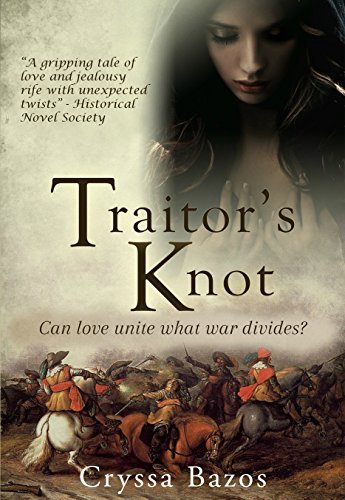
England 1650: Civil War has given way to an uneasy peace in the year since Parliament executed King Charles I.
Royalist officer James Hart refuses to accept the tyranny of the new government, and to raise funds for the restoration of the king’s son, he takes to the road as a highwayman.
Elizabeth Seton has long been shunned for being a traitor’s daughter. In the midst of the new order, she risks her life by sheltering fugitives from Parliament in a garrison town. But her attempts to rebuild her life are threatened, first by her own sense of injustice, then by falling in love with the dashing Hart.
The lovers’ loyalty is tested through war, defeat and separation. James must fight his way back to the woman he loves, while Elizabeth will do anything to save him, even if it means sacrificing herself.
Traitor's Knot is a sweeping tale of love and conflicted loyalties set against the turmoil of the English Civil War.
Only 0.99 on Kindle for a Limited Time.
Amazon UK • Amazon US
Cryssa Bazos
 Cryssa Bazos is an award winning historical fiction author and 17th century enthusiast with a particular interest in the English Civil War. Her debut novel, Traitor's Knot, is published by Endeavour Media and was the Medalist winner of the 2017 New Apple Award (historical fiction), a finalist for the 2018 EPIC eBook Awards (historical romance) and a finalist for the RNA Joan Hessayon Award. Her second novel, The Severed Knot, was long listed for the 2018 HNS New Novel Award and will be released in 2019. The Severed Knotis the story of two people who have been ripped away from their homes in Scotland and Ireland and transported as bondservants thousands of miles away to Colonial Barbados.
Cryssa Bazos is an award winning historical fiction author and 17th century enthusiast with a particular interest in the English Civil War. Her debut novel, Traitor's Knot, is published by Endeavour Media and was the Medalist winner of the 2017 New Apple Award (historical fiction), a finalist for the 2018 EPIC eBook Awards (historical romance) and a finalist for the RNA Joan Hessayon Award. Her second novel, The Severed Knot, was long listed for the 2018 HNS New Novel Award and will be released in 2019. The Severed Knotis the story of two people who have been ripped away from their homes in Scotland and Ireland and transported as bondservants thousands of miles away to Colonial Barbados. Connect with Cryssa:
Website • Newsletter• Facebook • Twitter • Instagram
Published on January 23, 2019 23:00
January 22, 2019
Author's Inspiration — The Last Devadasi by Barbara L. Baer #amwriting #HistoricalFiction @pomegranatebarb
Open Books • Amazon• Barnes & Noble • Indiebound.org
Barbara L. Baer
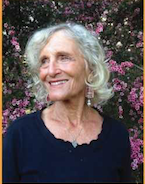 Barbara grew up in California, got her BA and MA at Stanford University before going to South India to teach, study dance, and have experiences unlike anything in her American life. She taught in Madras (now Chennai) and Tashkent, Uzbekistan, then part of the USSR, which gave her the inspiration and voice for her novella, Grisha the Scrivener. After a decade of encounters and adventures, she returned to the US, taught at Dennison University in Granville, Ohio, worked for newspapers, and wrote fiction and travel pieces.In India, she’d studied and fallen in love with the culture and classical forms of dance, but in America, her passion for ballet returned. She honed her skills reviewing classical and contemporary dance for newspapers and periodicals in America and France. Back in America, she also wrote political pieces and won a national journalism prize for her reporting on the United Farm Workers. Barbara’s fiction and non-fiction has often been reprinted in anthologies and she has spoken on national and regional public radio and on Voice of America about books as diverse as the life of a dissident Russian to a Soviet Jewish pomegranate botanist who led her to her own amateur horticulturalism. She helped create book festivals and started a small press to publish women writers, as well as one man.Credits include fiction in Redbook, New American Review, Confrontation, New Letters, 34th Paralleland other publications; non-fiction in Orion Magazine, The Nation, The Progressive, Narrative, Saisons de la Danse, The Massachusetts Review, Dance Magazine, Persimmon Tree and more. Her work appears in collections from To Eat with Grace, 100 years of Writing from The Nation, Traveler’s Tales, Wreckage of Reason, America’s Working Women. Her novella, Grisha the Scrivener, was published in 2011.Barbara has lived many years in Sonoma County, California, where she writes, edits and teaches through the county jail program, tends a garden and an orchard of pomegranates and olives, and is active in environmental and political causes. She lives with her husband, Michael Morey, also a writer and bricoleur, jack of all trades, who keeps things going.
Barbara grew up in California, got her BA and MA at Stanford University before going to South India to teach, study dance, and have experiences unlike anything in her American life. She taught in Madras (now Chennai) and Tashkent, Uzbekistan, then part of the USSR, which gave her the inspiration and voice for her novella, Grisha the Scrivener. After a decade of encounters and adventures, she returned to the US, taught at Dennison University in Granville, Ohio, worked for newspapers, and wrote fiction and travel pieces.In India, she’d studied and fallen in love with the culture and classical forms of dance, but in America, her passion for ballet returned. She honed her skills reviewing classical and contemporary dance for newspapers and periodicals in America and France. Back in America, she also wrote political pieces and won a national journalism prize for her reporting on the United Farm Workers. Barbara’s fiction and non-fiction has often been reprinted in anthologies and she has spoken on national and regional public radio and on Voice of America about books as diverse as the life of a dissident Russian to a Soviet Jewish pomegranate botanist who led her to her own amateur horticulturalism. She helped create book festivals and started a small press to publish women writers, as well as one man.Credits include fiction in Redbook, New American Review, Confrontation, New Letters, 34th Paralleland other publications; non-fiction in Orion Magazine, The Nation, The Progressive, Narrative, Saisons de la Danse, The Massachusetts Review, Dance Magazine, Persimmon Tree and more. Her work appears in collections from To Eat with Grace, 100 years of Writing from The Nation, Traveler’s Tales, Wreckage of Reason, America’s Working Women. Her novella, Grisha the Scrivener, was published in 2011.Barbara has lived many years in Sonoma County, California, where she writes, edits and teaches through the county jail program, tends a garden and an orchard of pomegranates and olives, and is active in environmental and political causes. She lives with her husband, Michael Morey, also a writer and bricoleur, jack of all trades, who keeps things going. Barbara loves to hear from readers, you can find her: Website• Twitter.
Published on January 22, 2019 23:00
January 21, 2019
Life in the Time of Sailing Ships – Part III, by Jayne Davis #History #Ships #Regency @jaynedavis142
Life in the Time of Sailing Ships – Part IIIBy Jayne Davis
Part I of Life in theTime of Sailing Ships looked at some phrases in everyday language that originated in the days of sail. Part II looked at living on a warship. For Part III, I’m returning to some of those everyday phrases.

Slush fund
The meaning today is a reserve of money used for illicit purposes. The meaning has changed over the years, as it was originally a fund used to buy small items for a ship’s crew, such as books for them to read.So why ‘slush’? It is an unappetising explanation.Ships’ crews ate a lot of salted meat. The cooking for all the men was done in a central galley, and for the salt beef or pork this consisted of boiling it up in large vats. The fat floated to the top, having much the same consistency as the slush we get when snow partially melts. The cook would skim this off and store it for sale.
 The galley on HMS Victory. Note the tiles to prevent falling embers setting fire to deck planks. The fire would be put out in rough weather or when going into action—there is nowhere to run to if a ship catches fire at sea..
The galley on HMS Victory. Note the tiles to prevent falling embers setting fire to deck planks. The fire would be put out in rough weather or when going into action—there is nowhere to run to if a ship catches fire at sea..Learn the ropes or Know the ropes
Knowing the ropes is to understand how to do something. Sailing ships use ropes—lots of ropes!The photos below are of the Cutty Sark, a 150-year old tea clipper now on permanent display in Greenwich, London. It was the fastest ship of its day.
 Just some of the rigging on the Cutty Sark.
Just some of the rigging on the Cutty Sark.
 Some of the running rigging on Cutty Sark. These are some of the ropes used to control the yards and sails. You need to know which one to pull on.
Some of the running rigging on Cutty Sark. These are some of the ropes used to control the yards and sails. You need to know which one to pull on.It seems obvious that the phrase must have come from the days of sailing ships, but this is disputed. It has been suggested that the phrase originated in the theatre, where ropes were used for raising and lowering scenery, and the word wasn’t seen in print until the beginning of the 19th century.I’m sticking with the nautical version – even if the phrase did not originate with sailing ships, it is very appropriate.
To the bitter end
Not bitter as in lemons…The photo below shows two sets of bitts on a tall ship (with ropes very neatly coiled). The bitts are the pairs of posts almost hidden by the rope.
 Bitts, with cable wound around them.
Bitts, with cable wound around them.An anchor or mooring cable would have one end wound around the bitts to fasten it to the ship. As the rope was paid out, it would eventually come to the bitter end—the end attached to the bitts. So the bitter end is when you can go no further.Again, this is disputed, but it sounds good to me.
Taken aback
As I’ve given you two potentially dodgy phrases, I’ll finish with this one which is more definite.Taken aback today is to be startled or surprised. The first things to be taken aback were sails, the phrase being first recorded in the 17th century. It means when the wind gets on the wrong side of a sail. This can happen due to a sudden shift in the wind, or due to a course change. If this happens accidently, it is not normally a good thing, but sometimes sails are ‘backed’ on purpose, when a ship heaves to, or if it is caught ‘in irons’. The principles are the same for tall ships like the Cutty Sark and for sailing dinghies, but it is much easier to explain using the latter!Heaving to is bringing a ship to a stop in the water, without anchoring. A ship being boarded for customs checks, for example, would have to heave to. On a sailing ship, this is done by having some of the sails backed. These backed sails push the ship back while others are trying to move it forwards.

Heaving to.
A sailing ship wanting to go in the direction the wind is coming from (into the wind) has to tack back and forth. Each time the ship turns, it has to pass though a position where the wind is coming from dead ahead. If the ship doesn’t have enough momentum in its turn, it can get stuck pointing directly into the wind, unable to move or turn further. As the ship is hardly moving the rudder doesn’t work. It is referred to as being ‘in irons’. This is an example of a phrase going from everyday like into shipboard life—a convict in manacles (in irons) cannot move, and nor can a sailing ship in this position.The way out of this, as I rapidly learned in my dinghy sailing days, is to back the jib. This pushes the boat backwards, giving enough movement for the rudder to work and put the boat in a position where both sails can fill. You then try again, hoping not too many people were watching.
 Backing the jib to escape an embarrassing situation.
Backing the jib to escape an embarrassing situation.Further reading:The Phrase Finder website discusses lots of phrases that have nautical origins, and debunks some that seem to be obviously related to the sea but are not.https://www.phrases.org.uk/meanings/nautical-phrases.html
The Mrs MacKinnons

England, 1799Major Matthew Southam returns from India, hoping to put the trauma of war behind him and forget his past. Instead, he finds a derelict estate and a family who wish he'd died abroad.Charlotte MacKinnon married without love to avoid her father’s unpleasant choice of husband. Now a widow with a young son, she lives in a small Cotswold village with only the money she earns by her writing.Matthew is haunted by his past, and Charlotte is fearful of her father’s renewed meddling in her future. After a disastrous first meeting, can they help each other find happiness?4.7* average on Amazon, available on Kindle Unlimited.Amazon
Jayne Davis
 Jayne Davis writes historical romances set in the late Georgian/Regency era, published as both ebooks and paperbacks. There are more articles on her blog. [please link to http://www.jaynedavisromance.co.uk/]She was hooked on Jane Austen and Georgette Heyer as a teenager, and longed to write similar novels herself. Real life intervened, and she had several careers, including as a non-fiction author under her real name. That wasn't quite the writing career she had in mind...Finally, she got around to polishing up stories written for her own amusement in long winter evenings, and became the kind of author she’d dreamed of in her teens. Her first book, The Mrs MacKinnons, was published in 2018. She is now working on the first few books in the Marstone Series, set in the late Georgian/early Regency period.Book 1 in the Marstone Series, Sauce for the Gander, will be published in early 2019.
Jayne Davis writes historical romances set in the late Georgian/Regency era, published as both ebooks and paperbacks. There are more articles on her blog. [please link to http://www.jaynedavisromance.co.uk/]She was hooked on Jane Austen and Georgette Heyer as a teenager, and longed to write similar novels herself. Real life intervened, and she had several careers, including as a non-fiction author under her real name. That wasn't quite the writing career she had in mind...Finally, she got around to polishing up stories written for her own amusement in long winter evenings, and became the kind of author she’d dreamed of in her teens. Her first book, The Mrs MacKinnons, was published in 2018. She is now working on the first few books in the Marstone Series, set in the late Georgian/early Regency period.Book 1 in the Marstone Series, Sauce for the Gander, will be published in early 2019.Connect with Jayne: Website • Twitter • Pinterest
Published on January 21, 2019 23:00
January 20, 2019
Inspiration behind the series, Legends of the Fenian Warriors, by Mary Morgan #amwriting #TimeTravel #Romance @m_morganauthor
Inspiration behind the series, Legends of the Fenian Warriors,by Mary Morgan
Hi Mary Anne! Thanks so much for hosting me on your wonderful blog today. I thought I’d share my inspiration behind my fictional series, Legends of the Fenian Warriors.
I have always been fascinated with Celtic mythology, so it only made sense that I would develop and expand the world of the Fenian Fae Warriors. Theirs was a world rich in legends, colors, and senses. I’ve based my own fictional account on the legend of the Tuatha Dé Danann—one of the invasions of Ireland. They were known as the Shining Ones or the Fae.
The Tuatha Dé Danann was defeated in two battles by the Milesians, whom historians and scholars alike agree were probably the first Gaels in Ireland. It was agreed that the new invaders (Milesians) and the Tuatha Dé Danann would each rule half of Ireland. Therefore, it was that Amergin of the Milesians chose that half of Ireland which lay above ground, leaving the Tuatha Dé Danann to retreat below. They were led underground by Manannán mac Lir, God of the Sea, who shielded them with an enchanted mist from mortal eyes. As time passed, they became known as the Sidhe (Shee), or Ireland’s faery folk.
With my warriors, there is nothing diminutive with these heroes. They’re ancient, extremely tall, and commanding. As always, it will take a strong woman to stand beside these Fae.
Trail Of A Warrior:Legends of the Fenian Warriors, Book 3

"You met them in the Order of the Dragon Knights. Now, journey to the realm of the Fae and witness their legends!”
A warrior sentenced to die.
On trial for breaking a supreme Fae law, Fenian Warrior, Liam MacGregor has no regrets. He is prepared to accept his sentence—even if it means his death. However, freedom comes in an unexpected manner, and brings with it certain dangers as he travels through the Veil of Ages.
A princess honor-bound to remain hidden.
Princess Abela might be a priestess and the daughter of royalty, but that doesn’t prevent her from doing the unimaginable. She sacrifices duty and honor to set free the man who captured her heart so many years ago. No matter the severity of his crimes, she cannot let Liam die.
A rescue that will bring about a war and divide a kingdom!
In their quest to secure a treaty to forestall Liam’s death sentence, they must fight their desires for one another, as well as the Fenian Warriors sent to capture them.
Excerpt
Taking the end of her braid, Liam wove the soft hair around his finger. Black as ebony, the lock glistened in the soft glow of the fire. She’d tempted him beyond reason. Once, he thought there might have been a destiny, but her words of rejection slammed the door on any possibility. If she had no desire to claim him, why did Abela come to his initiation?
“Why witness my ceremony?” He let out a frustrated breath and brought the braid to his lips.
“Because I never said goodbye,” she uttered softly. Lifting her head, her eyes sought his and her cheeks colored from the heat of his gaze.
Liam was unable to look away from her beauty. “No. I recall harsh words and tears.”
“We were young—naïve.”
“Stubborn and set on a path of adventure,” he added.
“But our roads have led us to this fork, so to speak.”
Liam cupped her chin. “Was it destined?” He felt her tremble from his touch.
“I am not a seer,” she replied, darting her tongue out along her bottom lip.
His mind screamed at him to move away. She was a princess—a priestess. But the temptation to taste her lips once more seeped into his being. Liam bent his head and placed a feather-like kiss on the corner of her mouth.
A small breathless whisper escaped her lips, “More.”
Her invitation sparked a desire that had remained sealed. Cupping the back of her head, he continued to kiss her tenderly on the eyes, nose, and forehead. As he shifted his position, Liam brought his arms around her and dared to feast on something that was forbidden. If death was his future, he wanted one more kiss to take with him.
Amazon US • Amazon UK • Barnes & Noble • iTunes• Kobo • The Wild Rose Press •
Mary Morgan
 Award-winning Celtic paranormal and fantasy romance author, Mary Morgan, resides in Northern California, with her own knight in shining armor. However, during her travels to Scotland, England, and Ireland, she left a part of her soul in one of these countries and vows to return.
Award-winning Celtic paranormal and fantasy romance author, Mary Morgan, resides in Northern California, with her own knight in shining armor. However, during her travels to Scotland, England, and Ireland, she left a part of her soul in one of these countries and vows to return.
Mary's passion for books started at an early age along with an overactive imagination. Inspired by her love for history and ancient Celtic mythology, her tales are filled with powerful warriors, brave women, magic, and romance. It wasn't until the closure of Borders Books where Mary worked that she found her true calling by writing romance. Now, the worlds she created in her mind are coming to life within her stories.
If you enjoy history, tortured heroes, and a wee bit of magic, then time-travel within the pages of her books.
Connect with Mary: Website • Blog • Twitter • Facebook Author Page • Facebook • Goodreads • Amazon Author Page• Pinterest • Instagram • BookBub.
Published on January 20, 2019 23:00
January 19, 2019
An Author’s Inspiration – a most intriguing signet ring! by Anna Belfrage #HistoricalFiction #HistoricalRomance #amwriting @abelfrageauthor
An Author’s Inspiration – a most intriguing signet ring!By Anna Belfrage
If one is going to be financially successful as a writer of historical fiction, one should write about the Tudors. Or World War II. Or Regency (especially when thinking Romance). One should not pin too much hope on making millions and millions by setting the story in the 17th century as it exists in a bubble of obscurity, trapped between the great drama of the 16th century and the bloody upheaval of the 18th. The 17th century has no Marie Antoinette, no Mary Queen of Scots.

For the history nerds among us, there’s nothing remotely obscure about the 17th century. This is the dawn of the Early Modern Age, a period defined by religious strife. It has the Thirty Years’ War, it has pillage. It has Wallenstein and Philip IV. It has (sniff) Gustav II Adolf hitting the dust at the Battle of Lützen. It has the English Civil War, the execution of Charles I, Cromwell’s mass deportation of the Irish. It has Mazarin and Louis XIV, it has the Dutch rebellion against the Spanish, it has a Glorious Revolution, it has men like John Locke and Isaac Newton. Reading through that rather impressive list, I can but wonder why not all historical fiction writers gravitate towards this fascinating era. Of late, more and more have, but no matter how handsome and impetuous the Stuarts, those Tudor redheads remain securely seated at the top of the historical fiction pyramid. Somewhat strange, IMO. Seriously, how many more versions of the Anne Boleyn story can we read? Why does a cruel and vindictive king with the girth of a pregnant Clydesdale evoke such interest? Beyond me, peeps. I must, however, admit that despite the historical smorgasbord offered by the 17th century, there is a very personal reason for my fascination with the 17th century, and that’s my husband.Let me immediately disillusion you by assuring you my husband is not a time traveller. And I’m thinking this is a good thing, all in all. My man has his feet very firmly planted in the here and now, a counter weight to my flights of fancy, an anchor to hold me, a harbour to keep me safe. Right; my infatuation with Mr Belfrage is neither here nor there – or maybe it is, but I must not digress – but the fact that he carries a signet ring on his finger is very relevant to this post, as is the fact that his family can be traced back to the more remote parts of time. He can claim ancestry from Erik XIV of Sweden (but rarely does, as Erik XIV was borderline insane, plus 90% of all Swedish noble families share that honour) but he can also claim Stuart ancestry – and all because of the religious upheaval that plagued Scotland in the 17th century.

Picture Gothenburg in the early 17th century: having brought in Dutch city planners to design his new city – as yet very much under muddy construction – the Swedish king, Gustav II Adolf, also needed to populate this city of his, preferably with merchants. Sweden at the time mostly traded in raw material. We exported timber, iron ore, wool and oats. We imported everything else – including capable people. On the opposite side of the North Sea lived a nation of savvy merchants, namely the Scots. Being a small and relatively poor country, Scotland produced a number of surplus sons, many of whom crossed the sea to Sweden (or elsewhere – preferably elsewhere – only a minority chose Sweden, having as yet not developed latter day’s appreciation for Swedish blondes).To this building site, yet another Scot arrived in 1624 – no doubt attracted by the fact that so many Scots were already there. John Belfrage was twelve, and came with his mother, Joneta Stuart. According to surviving records, they were fleeing their homeland due to religious persecution – that was the reason Joneta gave. Given that they chose to go to Sweden, we must assume these refugees were Protestants. Sweden looked askance at Catholics, what with Gustavus Adolphus being busy cementing his reputation as the global defender of all Protestants.As John received an education and rose to local prominence, we can deduce that Joneta carried funds of some kind with her. Other than that, we know very little. In what straits did Joneta find herself that her powerful Stuart connections could not help her? After all, Joneta was a Stuart, albeit from a cadet branch, but still…And what became of John’s father?John made a good life for himself. He became the mayor of a small Swedish city, saw his name and coat of arms among the Swedish nobility and had well over ten children. By the time he died, he was probably more Swedish than Scots, answering to the name of Hans (a diminutive of Johannes) rather than John. He probably mostly spoke Swedish, but I bet he now and then dreamed in Scots. Personally, I get the impression this was a very ambitious man, on a mission to reclaim whatever grandeur the precipitated flight from his homeland had caused him to leave behind. In my experience, vastly ambitious people have a large streak of egoism in them, so I am not entirely sure Hans would have been the kind of person I’d have liked wholeheartedly. But he did make good, and for that I doff my mental hat to him.This little glimpse into my husband’s ancestry fascinated me (it made him so exotic! Me, being young, craved exotic) Where before my preferred historical reading matter tended to be focused on the 11th to 14th century (and I still spend a substantial amount of time submerged in this period. First loves never die, they say), I began reading extensively about the sixteen hundreds, a period defined not only by religious conflicts but also by the birth of modern science, of modern concepts such as the rights of men. Sadly, at the time those human rights did not include the right to worship as one pleased, but the seeds for future liberties were sown.

Out of all this reading The Graham Saga began to take form. My central character very quickly became a Scot, and because I was particularly intrigued by the tales of Covenanters and the brutal persecution they suffered at the hands of the restored Stuart monarchy, this shadow man of mine developed into a former Commonwealth soldier, a man of convictions and a deep personal faith. Just to spice up his life a bit, I decided to endow this man with a woman very different from him. Enter Alexandra Lind, a modern-day woman who had the misfortune (or not) to fall through time and land at Matthew’s feet. The rest, as they say, is history. It all began in A Rip in the Veil , when Alex Lind first clapped her concussed eyes on Matthew Graham. Below an excerpt from that first book – I hope you enjoy it!

“What’s your name?” she asked.“Matthew,” he replied after a while, rolling over in her direction. “Matthew Graham.”“I’m Alex Lind.” She eased herself up to sit. She licked her lips, and he fumbled in the dark for his water skin, extending it in her direction. “Alex?” he sat up. “That’s a lad’s name.” She snorted and drank some more. “No it isn’t, last time I looked I was definitely female and it’s still my name. Short for Alexandra.” She twisted her head in the direction of the opening, exposing her nape, a bare patch of skin highlighted by the severe haircut. She had right pretty ears, tight to her skull and ending in a slight, pink point. Fairy ears...“What are you?” he whispered, making her turn to face him.“Just plain Alex; you know, an ordinary woman.” “No you’re not; women don’t walk around baring their bodies like you do, their hair cut short.” “I’m not baring my body! I’m fully dressed, for God’s sake!” He winced at her careless blasphemy. “Aye, there’s cloth all over you, but it reveals more than it conceals.” “Tough, okay? You’d better learn to live with the times, mister. Just because you’ve chosen to live in some kind of archaic religious context, it doesn’t give you the right to judge the rest of us.” “Religious context?” he echoed. “Archaic?” “Well, look at you! You dress like a cross between a Hare Krishna monk and an Amish person, you stare at me as if you’ve never seen a bra before. You must’ve been living in some kind of secluded all male community.” His mouth twisted into a wry smile. Aye, that was very true. He leaned towards her, trying to see her eyes in the dark. “What’s a Harray krissna monk? And I haven’t seen a … bra, is it? before. I would definitely have remembered.”She was staring at him, hands clenched tight around each other. Matthew gave her a wary look; the lass was gaping as if she’d seen a ghost. “But you know what a car is, right?” Matthew shook his head. “A TV? Radio? A phone?” He frowned; was this some sort of game? “Nay, I’ve never heard of any such things.” She gulped and scooted away from him, her gaze flying to his bundle, the flint and steel he’d left discarded on the floor. She moaned, hid her face in her arms. “No,” she whispered. “No way. Stuff like that doesn’t happen, not in real life.” “What?” He came after her, but she reared back, and the expression on her face made him raise his hands, palms towards her. “I’m not about to hurt you.”“It’s not you, it’s just...” She broke off to stare yet again at him and his possessions. “Bloody hell, no, no, no.” She crawled towards the opening. “The car. My car, it’ll be right there, where I left it. This is just a bad dream, an effect of hitting my head too hard.” “What’s a car?” he said. She laughed, and then she began to cry. He followed her outside, made a grab for her when she slipped. “My BMW,” she said, “it has to be here!” He had no idea what she was looking for as she limped up and down the slope, but whatever it was, it wasn’t where she’d expected it to be. “A dream, it’s just a dream, isn’t it?” She looked at him beseechingly, and he had no idea what to say. This was no dream, not unless they were both sleeping and dreaming the same thing. “It can’t be true.” To his surprise she placed a hand on his arm. “Too solid,” she moaned, “you’re too damn solid, you hear?” She hit him, repeatedly. “So are you, lass, but I don’t take to hitting you, do I?” He wrapped his arms around her, pinned down her hands.“Sorry,” she hiccupped before breaking down completely, a warm weight against his chest. Dearest Lord, but it felt good to hold a woman this close, her hair tickling his nose. It was a near on perfect match, her body a collection of curves that fitted comfortably into his larger and broader frame, her head resting against his shoulder. With an effort he released her. She was still weeping, albeit silently, and he coaxed her back inside, unnerved by her dejection. “What is the matter, lass?” She just shook her head, mumbled something he made out as ‘impossible’, and sank down to sit before the little fire.
Amazon It is also available as an audiobook read by the marvellous Greg Patmore: Amazon UK (Audio)Amazon US (Audio)
Anna Belfrage
 Had Anna been allowed to choose, she’d have become a time-traveller. As this was impossible, she became a financial professional with two absorbing interests: history and writing. Anna has authored the acclaimed time travelling series The Graham Saga, set in 17thcentury Scotland and Maryland, as well as the equally acclaimed medieval series The King’s Greatest Enemy which is set in 14th century England. She has recently released the first in a new series, The Wanderer. This time, she steps out of her normal historical context and A Torch in His Heart is with a fast-paced contemporary romantic suspense with paranormal and time-slip ingredients. She has loved writing it – she hopes her readers will like reading it just as much. Find out more about Anna by visiting her website, or her Amazon page. You can also find her on Twitter and on Facebook.
Had Anna been allowed to choose, she’d have become a time-traveller. As this was impossible, she became a financial professional with two absorbing interests: history and writing. Anna has authored the acclaimed time travelling series The Graham Saga, set in 17thcentury Scotland and Maryland, as well as the equally acclaimed medieval series The King’s Greatest Enemy which is set in 14th century England. She has recently released the first in a new series, The Wanderer. This time, she steps out of her normal historical context and A Torch in His Heart is with a fast-paced contemporary romantic suspense with paranormal and time-slip ingredients. She has loved writing it – she hopes her readers will like reading it just as much. Find out more about Anna by visiting her website, or her Amazon page. You can also find her on Twitter and on Facebook.
Published on January 19, 2019 23:00
January 18, 2019
#Book Review — The Darkest Hour: WWII Tales of Resistance #HistoricalFiction #WW2 @swiftstory @KathrynGauci @JohnMcKay68 @AUSXIPMaryD @MarionKummerow @RobertaKagan
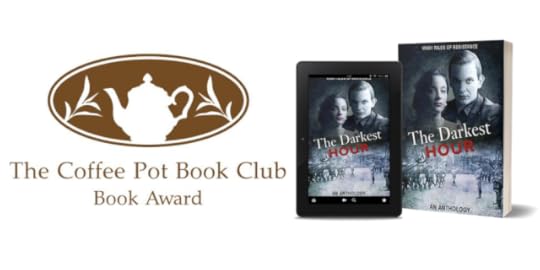 The Darkest Hour:WWII Tales of Resistance
The Darkest Hour:WWII Tales of ResistanceBy Roberta Kagan • Jean Grainger • Marion Kummerow • Ellie Midwood • Alexa Kang • Mary D. Brooks • Deborah Swift • Kathryn Gauci • John R. Mckay • Ryan Armstrong
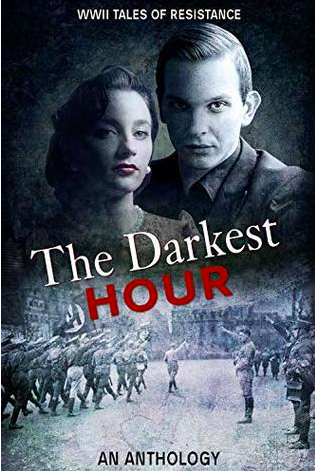
WW2. When the world falls to terror and tyranny reigns…
...how far would you go to resist?
Would you risk your own life or the lives of the ones you love?
From a young Jewish woman in love fighting her way out of the Warsaw ghetto, to a Czech assassin rising above his fears for an attempt on a Nazi Hangman’s life, to a daughter who vows to avenge her family by taking down a Japanese commander, and a French boy's touching act of defiance no matter how small.
Come and get a glimpse of the invisible side of WWII - the Resistance, those who refuse to bow down to brutality.
Hold your breath and hope for the best in the darkest of times, when our heroes and heroines risk all to defy evil so the light of freedom will shine over their countries again.
This collection includes ten never before published novellas by ten of today’s bestselling WWII historical fiction authors.
Foreword by Terry Lynn Thomas, author of The Silent Woman, the USA Today Bestseller.
Featured Stories:
Bubbe’s Nightingale by Roberta Kagan
Catriona’s War by Jean Grainger
Reluctant Informer by Marion Kummerow
Killing the Hangman by Ellie Midwood
The Moon Chaser by Alexa Kang
Enemy at the Gate by Mary D. Brooks
The Occupation by Deborah Swift
Code Name Camille by Kathryn Gauci
V for Victory by John R McKay
Sound of Resistance by Ryan Armstrong

“…we shall fight on the beaches, we shall fight on the landing grounds, we shall fight in the fields and in the streets, we shall fight in the hills; we shall never surrender…”Sir Winston ChurchillHouse of Commons 4 June 1940
There were those who refused to bow down to tyranny, but not all of them wore uniforms. Some of them were ordinary people from different walks of life. These brave few risked everything, including their lives and the lives of those they loved. Some acts of defiance were small — chalking the letter “V” onto walls. Others, hid those who were persecuted. A few took up arms, and they died fighting for their country, for their compatriots, and for themselves. These men, woman and sometimes children are known by a collective name. They were called The Resistance.
The Darkest Hour: WWII Tales of Resistance has brought together some of the finest World War II Historical Fiction authors. These authors have donated their time and their skills to bring about this remarkable collection of short stories about The Resistance. All proceeds from the sale of this book go to the United States Holocaust Memorial Museum in Washington DC.
From the fall of Czechoslovak to the occupation of China, The Darkest Hour: WWII Tales of Resistance is a compelling account of those who chose not to surrender, but to fight on, no matter what the consequences.
I am going to approach this review the same way I approached the book — one story at a time.
Bubbe’s Nightingale by Roberta Kagan

Bubbe Ruchel never talked about the past. However, Bubbe is suffering from dementia, and she does not want her story to be forgotten.
Kagan approached this story with great sensitivity and grace. The brutality of the Warsaw Ghetto was vivid in the telling, but so was the determination of The Jewish Resistance.
Bubbe is a superb heroine. She lost everything, her world was turned upside down, but she approached the future with resilience and courage. Running alongside the hardship and terror of the Ghetto is a sweet but tragic love story, which made this tale even more heartbreakingly beautiful.
Kegan has given a sense of what the Warsaw Ghetto was like, and with the limited word count, she has made a very informed choice of what to include and what not to. Reading about the atrocious treatment of the Jews during World War II can sometimes overwhelm, but in Bubbe’s Nightingale, there is a good balance between the terrible barbarities and the quieter, gentler moments of everyday life. There is also a sweet love story, which gives some light relief. This was a great novel to start the anthology with.
Catriona’s War by Jean Grainger
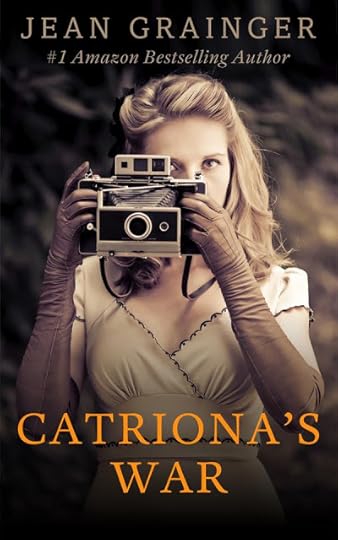
Catriona McCarthy’s father, Kieran, told her to wait for his return. Only he didn’t come back. No one knows what has happened to him, just that the enemy has captured him and in all likelihood he is dead. If that were not enough for Catriona to get her head around, she is now being asked by the British if she will continue what her father started.
What a wonderfully compelling tale Catriona’s War is. I adored Catriona. She is such a strong woman who seemed to relish being thrown into the deep end. Her relationship with Schroeder, a German officer, was incredibly enthralling. I thought her portrayal was magnificent.
The story was fast-paced and the narrative was clear and concise. The ending was more than satisfying. An enjoyable read.
Reluctant Informer by Marion Kummerow

Sabine Mahler believes that if she minds her own business, then the feared Gestapo will leave her and her family alone. However, that all changed the day Frau Klausen became her new co-worker.
Reluctant Informer is a compelling but also a harrowing account of one woman’s fight to save her husband. This story demonstrates not only the brutality of the Gestapo but also the risks that The Resistance took to thwart them.
As a character, I thought Sabine was wonderfully portrayed. She really is caught between a rock and a hard place. I found myself thinking, what I would do if I had been her? Each page turn had me holding my breath, wondering what new horrors would await her. The writing was absolutely absorbing.
Kummerow certainly has a remarkable eye for historical detail. This was such a great story. I cannot praise Reluctant Informer enough.
Killing the Hangman by Ellie Midwood

The Man With The Iron Heart — that is what Hitler called him. The Czech’s called him by a different name — The Hangman. When Jozef and Jan received their orders, they know what they have to do. They have to assassinate Reinhard Heydrich.
I am a big fan of Ellie Midwood’s writing, and I am glad to say that she did not disappoint. Her portrayal of Heydrich was chilling. Here was a man who radiated power and terrorised everyone, including those who worked with him. He answered only to Hitler, Göring and Himmler, and was one of the principal architects of the Holocaust. Midwood has painted one of the darkest figures within the Nazi elite very well.
Midwood has based her story around Operation Anthropoid, and the two soldiers who carried out the assignation attempt of Heydrich have been immortalised in this book. I thought Midwood’s depiction of Jozef Gabčík and Jan Kubiš was outstanding. What these men were asked to do was incredibly dangerous, one could say suicidal. I thought the contrast between the antagonist, Heydrich, and the protagonists, Jozef and Jan, was brilliantly executed.
There is no doubt that Midwood has a novelist eye for human detail and fragility, and she always writes such crystalline prose, making her work a real pleasure to read. Killing the Hangman is an excellent addition to this fabulous anthology.
The Moon Chaser by Alexa Kang

When the Japanese raped Nanking, Yuan Wen-Ying was determined to avenge her countryman. However, it will be no easy task, and it will come at a great personal cost.
Kang has a visceral understanding of what makes history worth reading. The Moon Chaser was a compelling read from start to finish. To fit such a fabulous story in such a limited word count is indeed worthy of mention. The Moon Chaser is a gripping account of the Resistance in China.
Yuan Wen-Ying is a fabulous heroine. She is a very intelligent young woman who has suffered an immense personal loss. Yuan Wen-Ying is the type of protagonist that inspires sympathy. This was a spectacular portrayal of a character that I really came to care about.
The writing is elegant. The narrative is engaging. What a wonderfully brilliant story.
Enemy at the Gate by Mary D. Brooks
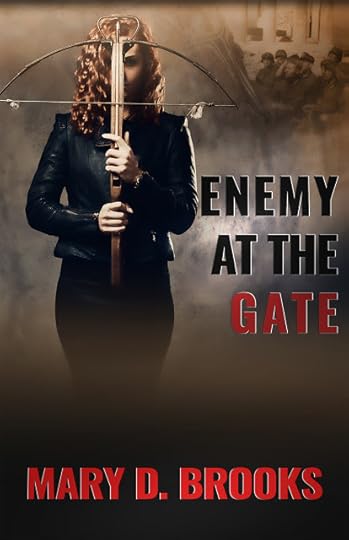
At thirteen years old, Zoe had no notion that one day she would be a part of The Resistance. However, fate plays a cruel hand, and now Zoe is determined to free as many Jews as she can.
Zoe is a headstrong protagonist that sometimes does things before she fully thinks about the consequences, which made her very endearing. How she survives, I have no idea. She certainly has her share of near-misses! Zoe considers herself a Spartan, and she models herself on that idea of fearlessness — and boy, does she hate those Athenians — almost as much as the Italians! She is a very refreshing character. Zoe’s anger at the injustice she witnesses and her desire to free her country makes her a very convincing patriot.
Brooks has delivered a very plausible account about the occupation of Greece. The narrative was brilliant, and this short-story is an example of historical fiction at its very best. Enemy at the Gate is undoubtedly an enthralling tale.
The Occupation by Deborah Swift.
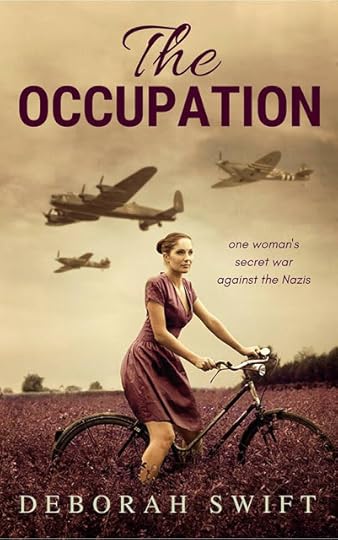
It was a sad day for the Islanders when the German Army invaded. Many of the Islanders had left before the occupation, but there had only been limited space on the boats. Céline Huber and her best friend Rachel were two of the unlucky ones. The German invasion of Jersey brought about many changes and sacrifices, but the one thing Céline would not sacrifice was her friend, despite what that may mean for her.
How I loved this book! The Channel Island’s hold a special place in my heart and this book captures the spirit and the endurance of these remarkable Islanders. Céline’s story is utterly compelling. Her bravery sums up many of those in occupied countries during this time. There was no way she was going to give up her Jewish friend to the Nazis. She would rather die than do that. The antagonist of this tale, the cruel and sadistic Horst, was in direct contrast to Céline’s gentle nature. The fact that Horst is Céline’s brother-in-law makes the contrast even more evident, especially when compared to his brother. The young German doctor, Leutnant Müller is also worthy of mention. He is an unlikely protagonist. His compassion is certainly noteworthy, and his disgust at the way Horst treats the prisoners of war is a reminder that not all German soldiers bought into Nazi ideology.
Swift writes with an elegance as well as with authority. I thought it was a fabulous portrayal of what Jersey was like under the long five years of occupation. Kudos, Ms Swift.
Code Name Camille by Kathryn Gauci
Nathalie Fontaine is determined to join La Résistance in Paris. Paris is a city under occupation. No one is to be out past curfew, and German soldiers can stop and search anyone, any time they choose. Nathalie immerses herself in Parisian culture while working for La Résistance. However, something soon becomes very clear. There is a double agent in their midst. The question is… Who?
Code Name Camille was impossible to put down. I was utterly immersed and committed to this story from the opening sentence to the very last word. This is a vastly entertaining tale, with a very compelling plot. When it became evident that there was a double-agent I was trying to guess as to who that was — it turned out I was wrong!
Gauci has written an extremely readable tale. Great Characters. Great narrative. Great Story.
V for Victory by John R McKay
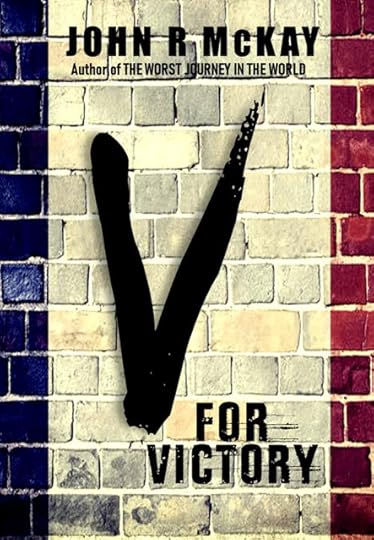
When Charles Mercier sees the victorious German Army march along the Champs-Élysées he decides that when he grows up, he is going to join the German Army, after all, he cannot join the French one, can he? However, after an inspiring speech by his teacher, Charles is reminded that he is a son of France. With some stolen chalk, young Charles is determined to do his bit. He will go out at night and chalk the letter “V” onto buildings and monuments. Vive la France.
Mckay has penned a lucid account of what life was like in occupied France from a child’s perspective. Charles was a character that matured as the story progressed. He is incredibly naive at the beginning. Charles does not understand the consequences of his actions. He thinks he might have a telling off for scribbling on the wall. He does not even consider that he could receive a bullet instead. Likewise, he doesn’t understand why they can’t listen to the radio anymore.
Mckay has a beautiful eye for detail and a compelling style to his narrative. He writes with imagination and energy which made V for Victory utterly engrossing. I thought it was fabulous.
Sound of Resistance by Ryan Armstrong

When Charlie’s mother is killed in a car accident, he has no idea just how much his life is going to change. He finds himself in Germany, under the care of his sadistic uncle. Charlie is an American. He does not hold with Nazi ideology. However, he has to tread carefully, for his uncle is a man not to be crossed.
Sound of Resistance is a gripping account of courage under impossible circumstances. Charlie is a wonderful protagonist to pit against his evil uncle. Charlie sees Erich for what he really is — a bully and a coward. However, at the same time, Armstrong explores Erich’s motivation for acting the way he does. Erich seems to have a conscious. He only sleeps three hours a day so one can only surmise that he doesn’t sleep because of what he does. Erich cannot get through a day without taking what he calls “magic pills.” It seems there is a lot more to him, then initially meets the eye, I would like to learn more about him. Nevertheless, he is still deplorable, and a thoroughly disagreeable man.
The narrative of this tale is very engaging and I was utterly engrossed in this story of good vs. evil.
The Darkest Hour: WWII Tales of Resistance is a beautiful book that you can start either at the beginning and read through to the end, or read one or two of the stories that take your fancy. Each book has a short synopsis at the beginning which gives you an idea of the flavour of the tale that is to follow. I recommend that you read them all for they are all wonderful. If you are looking for a lovely scope of Resistant stories, then this is the book for you.
I Highly Recommend.Review by Mary Anne Yarde.
The Coffee Pot Book Club.
Amazon US • Amazon UK
*** All proceeds will be donated to the United States Holocaust Memorial Museum In Washington DC ***
Roberta Kagan
 I’m an American writer of Jewish and Romany decent. I write Historical Fiction and Historical Romance, most of which is set during the holocaust. Although I never discount the horrors of the time period, the main focus of my work is on ordinary people who prove to be strong heroic characters in unfathomable circumstances.
I’m an American writer of Jewish and Romany decent. I write Historical Fiction and Historical Romance, most of which is set during the holocaust. Although I never discount the horrors of the time period, the main focus of my work is on ordinary people who prove to be strong heroic characters in unfathomable circumstances.Connect with Roberta: Website • Twitter • Facebook
Jean Grainger
 Jean Grainger was born in Cork, Ireland. She has been a tour guide of her beloved home country, a teacher, a university lecturer and a playwright. She began writing fiction at the suggestion of her clients on tours, many of whom were sure all the stories she told them would make for a great book. Her first book, The Tour, has become a Number 1 bestseller on Amazon. It tells the story of a disparate group of American visitors to Ireland, who, along with their Irish tour guide have a life changing experience in the magical Emerald Isle.
Jean Grainger was born in Cork, Ireland. She has been a tour guide of her beloved home country, a teacher, a university lecturer and a playwright. She began writing fiction at the suggestion of her clients on tours, many of whom were sure all the stories she told them would make for a great book. Her first book, The Tour, has become a Number 1 bestseller on Amazon. It tells the story of a disparate group of American visitors to Ireland, who, along with their Irish tour guide have a life changing experience in the magical Emerald Isle. Her second book, So Much Owed, is a family saga set during the Second World War. The story centres on the Buckley family of West Cork and how their lives are pulled in different directions as they become embroiled in the war. It is a sweeping family saga of intrigue and romance against the background of occupied Europe.
In her third novel, Shadow of a Century, she tells a tale of a battered old flag found in New York in 2016, a century after it was used during the Easter Rising, when Ireland made her final bid for freedom from Great Britain. This tells the story of a journalist who uncovers a story, one with much more to it than a flag.
Her fourth novel, due out in Spring 2016, Under Heaven’s Shining Stars, is set in the 1970s in Cork, Ireland and is a novel about friendship. Three boys, Liam, Patrick and Hugo, though from very different backgrounds are united in a deep but often times challenging friendship. As their lives progress, only by staying strong, can they prevail. Or fail.
Her novella, Letters of Freedom, tells the story of Carmel, stuck in a pointless marriage, when a figure from her past emerges and changes everything with a ‘like’ on Facebook. This quick read will touch your heart.
She lives in Cork with her husband and her two youngest children. The older two come home occasionally with laundry and to raid the fridge.
Connect with Jean: Website
Marion Kummerow
 Marion Kummerow was born and raised in Germany, before she set out to "discover the world" and lived in various countries. In 1999 she returned to Germany and settled down in Munich where she's now living with her family.
Marion Kummerow was born and raised in Germany, before she set out to "discover the world" and lived in various countries. In 1999 she returned to Germany and settled down in Munich where she's now living with her family.After dipping her toes with non-fiction books, she finally tackled the project dear to her heart. UNRELENTING is the story about her grandparents, who belonged to the German resistance and fought against the Nazi regime.
It's a book about resilience, love and the courage to stand up and do the right thing.
Connect with Marion: Website • Twitter
Ellie Midwood
 Ellie Midwood is a best-selling, award-winning historical fiction writer.
Ellie Midwood is a best-selling, award-winning historical fiction writer.She's a health-obsessed yoga enthusiast, a neat freak, an adventurer, Nazi Germany history expert, polyglot, philosopher, a proud Jew and a doggie mama.
Ellie lives in New York with her fiancé and their Chihuahua named Shark Bait.
Connect with Ellie:
Website • Amazon • Goodreads • BookBub • Facebook.
Mary D. Brook
A geek with too many imaginary friends who speak different languages (knew those language classes would come in handy). Historical romance and urban fantasy storyteller and addicted to stories and song about strength and courage. I play well with others (for an introvert) but then retreat to talk and write about my imaginary friends. Passionate about lots of things that inspire the mind (art/design, psychology, science and tech) that sets my muse on fire (she's a busy lady!). You can find me here:
Connect with Mary: Website • Twitter
Deborah Swift
 I am a novelist living in the Lake District in England. I write historical fiction but read widely - contemporary and classic fiction. I choose my books carefully, so I don't read many duds. If I do, they are not reviewed here, as a gesture of respect to other writers.
I am a novelist living in the Lake District in England. I write historical fiction but read widely - contemporary and classic fiction. I choose my books carefully, so I don't read many duds. If I do, they are not reviewed here, as a gesture of respect to other writers.Connect with Deborah: Website • Twitter
Kathryn Gauci
 Kathryn Gauci was born in Leicestershire, England, and studied textile design at Loughborough College of Art and later at Kidderminster College of Art and Design where she specialised in carpet design and technology. After graduating, Kathryn spent a year in Vienna, Austria before moving to Greece where she worked as a carpet designer in Athens for six years. There followed another brief period in New Zealand before eventually settling in Melbourne, Australia.
Kathryn Gauci was born in Leicestershire, England, and studied textile design at Loughborough College of Art and later at Kidderminster College of Art and Design where she specialised in carpet design and technology. After graduating, Kathryn spent a year in Vienna, Austria before moving to Greece where she worked as a carpet designer in Athens for six years. There followed another brief period in New Zealand before eventually settling in Melbourne, Australia.Before turning to writing full-time, Kathryn ran her own textile design studio in Melbourne for over fifteen years, work which she enjoyed tremendously as it allowed her the luxury of travelling worldwide, often taking her off the beaten track and exploring other cultures. The Embroiderer is her first novel; a culmination of those wonderful years of design and travel, and especially of those glorious years in her youth living and working in Greece – a place that she is proud to call her spiritual home.
Her second novel, Conspiracy of Lies, is set in France during WWII. It is based on the stories of real life agents in the service of the Special Operations Executive and The Resistance under Nazi occupied Europe. To put one’s life on the line for your country in the pursuit of freedom took immense courage and many never survived. Kathryn’s interest in WWII started when she lived in Vienna and has continued ever since. She is a regular visitor to France and has spent time in several of the areas in which this novel is set.
Connect with Kathryn: Website • Twitter
John R McKay
 John R McKay was born and raised in Wigan, Greater Manchester and after serving in the Royal Air Force for seven years he joined Greater Manchester Fire and Rescue Service in 1997 until leaving to take up other pursuits, including writing.
John R McKay was born and raised in Wigan, Greater Manchester and after serving in the Royal Air Force for seven years he joined Greater Manchester Fire and Rescue Service in 1997 until leaving to take up other pursuits, including writing. He has two daughters and lives with his wife, Dawn.
John's debut novel, the thriller 'The Journal', tell the story of a young man trying to come to terms with the death of his partner whilst avoiding a killer. It takes the reader from modern day England back to the two world wars, where the mystery of what is happening to him can be revealed.
His second novel, the acclaimed 'The Absolution Of Otto Finkel', is a historical novel covering largely unknown events of World War 2 and how war affects people in different ways. John has carried this premise for many years and is extremely proud now the work has been completed and published by Pegasus.
His third novel 'Mosquitoes' is a break from his normal genre and is a contemporary study of how a man can 'lose the plot' when circumstances in his life change suddenly. A black comedy, Mosquitoes is a uniquely written story, told from the perspective of a man unable to cope with the both the pressures of modern society and those he puts on himself.
John has recently completed his fourth novel, 'The Sun Will Always Shine' which is a return to historical fiction, telling the tale of two brothers during the First World War who are the keepers of a dangerous secret.
All four books are now available to purchase through Amazon in paperback and Kindle at very reasonable prices.
He cites his modern literary favourites as Sebastian Faulkes, Robert Harris and Wilbur Smith.
He is currently working on his fifth novel, which he is hoping to release in 2017.
John would like to thank Kellie Dennis of BOOK COVERS BY DESIGN for the excellent artwork for his books.
Connect with John: Twitter • Facebook
Ryan Armstrong
I have always enjoyed reading and writing. I write in the evenings. I have a three year old and a five month old - both boys. I am fortunate to have a supportive wife who lets me have time to write and listens to my rough drafts as I work out plot lines. I majored in history and am a romantic guy. So, I wrote "Love and Hate" a (necessarily dark but meaningful) historical fiction novel with a heavy love story element.
Published on January 18, 2019 23:30
The Coffee Pot Book Club
The Coffee Pot Book Club (formally Myths, Legends, Books, and Coffee Pots) was founded in 2015. Our goal was to create a platform that would help Historical Fiction, Historical Romance and Historical
The Coffee Pot Book Club (formally Myths, Legends, Books, and Coffee Pots) was founded in 2015. Our goal was to create a platform that would help Historical Fiction, Historical Romance and Historical Fantasy authors promote their books and find that sometimes elusive audience. The Coffee Pot Book Club soon became the place for readers to meet new authors (both traditionally published and independently) and discover their fabulous books.
...more
...more
- Mary Anne Yarde's profile
- 159 followers



